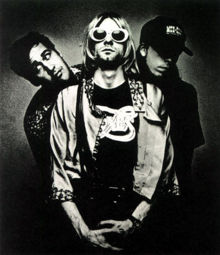There is an article on Condé Nast Portfolio written by Cathleen MacCarthy, “Reality’s Bites“, which discusses the “topping out” of baby boomer memorabilia and the rise of high end collectibles that are a draw for Generation X, including skateboarding, videogames, and ’90s rock.
The article cites many examples from different fields reflecting the birth of the market of pop culture rising from Beatles and Rolling Stones memorabilia in the early 80s, compared with interest today in Nirvana and Guns ‘N Roses.
While the true “state of the market” for these different areas of collecting are diverse, it will be interesting to watch the parallels of comparable properties in movie and television prop collecting.
I think one parallel is that those properties or rock stars or celebrities which are iconic – the Beatles, Elvis, John Wayne, etc. – will always be strong, I think the same can be said for classic films, such as Gone with the Wind, Casablanca, Citizen Kane, etc.
The real interest comes with what will be the next “classic” for any given generation, and how much time must pass before it can be fully tested for longevity.
Also, film franchises and properties can be revived – with a successful sequel or remake – so that changes things a little, when compared with a musician or sports figure or celebrity who has passed. Even with a property like the original Star Wars trilogy, which will always be classic and stand the test of time – the Prequel films gave birth to a new generation of fans who will have their own nostalgia tied into the franchise, and also be introduced into the older films. The same is true of Star Trek, with it’s various spin off television series and films, and upcoming film remaking the classic cast.
In any event, one way to gauge the popularity and longevity of any given film or television property is to monitor and track the pieces from those movies and shows at high profile auctions and see what the trends are.
I have noticed, informally, that is seems a large percentage of dedicated original prop collectors are in their 30s and 40s, which makes sense, given the high cost of original props and wardrobe. But because of this demographic, many of these collectors chase after the same pieces, with the most popular arguably being Star Wars, Star Trek, and action and sci-fi films from the 70s to 90s. As new entrants to the hobby shift the demographic to a younger set, it should be interesting to see what emerges as the new potential classics for a newer generation.
Jason De Bord

